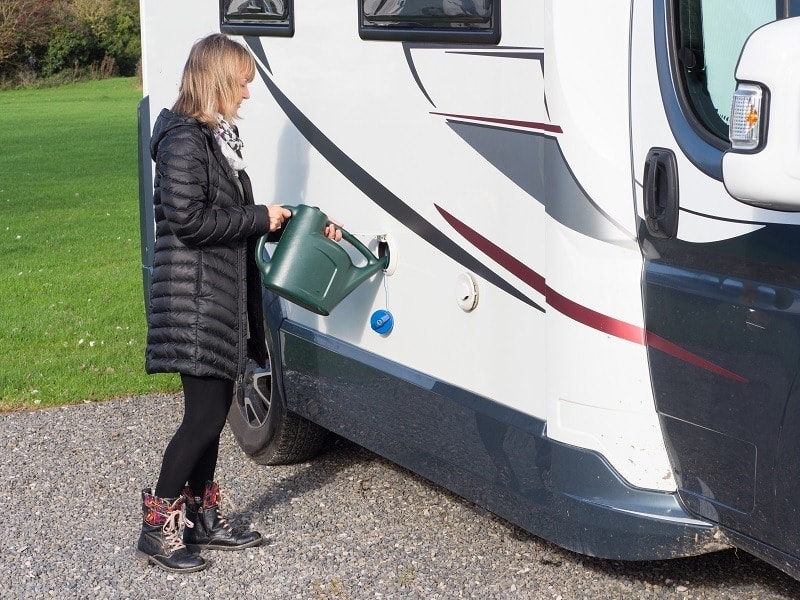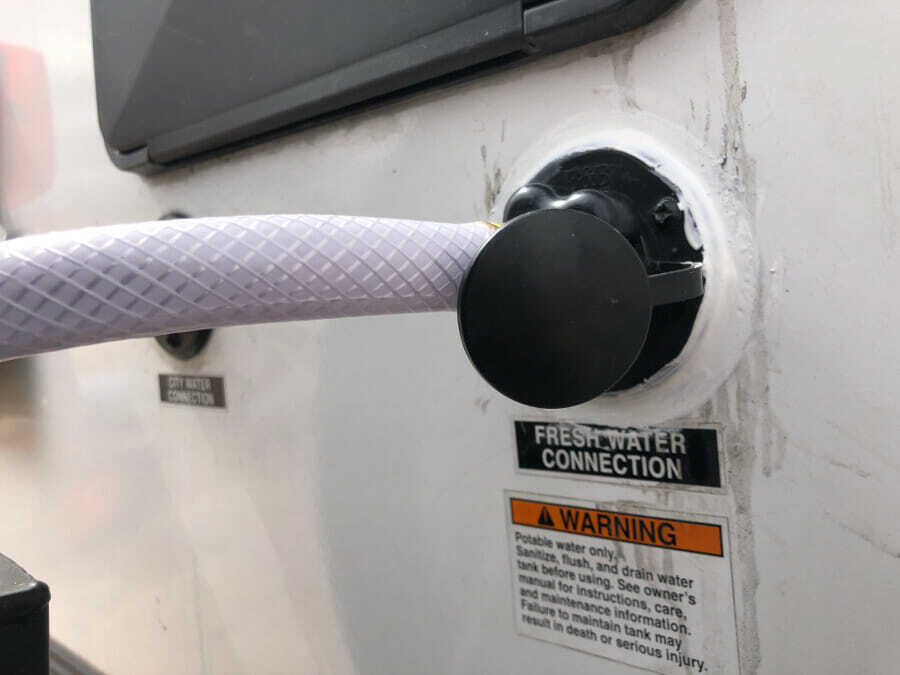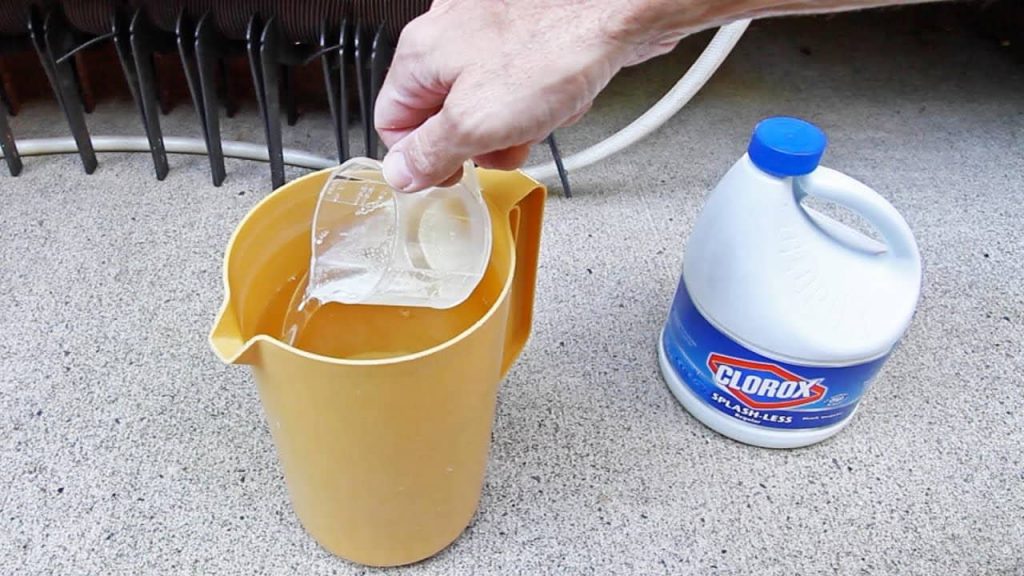Freshwater is an RV living staple whether you stay on the road for a week, month, or permanently. You need it for drinking, cooking, and a few other basic chores. Many campgrounds provide direct access to freshwater but many don’t and you won’t definitely get this facility when you are boondocking. RVs have a separate freshwater storage tank for solving this problem, but how long to keep fresh water in RV tank?
Drinking water does not stay fresh forever. Knowing how long it stays good in the tank and sanitizing RV water tank are important to keep it fresh for longer.
Contents
The Danger of Storing Water for too Long
Some people have the misconception that having the water from a safe, clean source and sanitizing it give it an indefinite shelf-life, which is not true. Water in a closed environment is bound to be contaminated. Algae, parasites, bacteria, and other pollutants will grow in it sooner or later.

However, cleaning RV water tank and sterilizing the water is not enough as water will go bad after a certain period. It happens because water contains some natural contaminants and those organisms multiply with time.
When the water is bad, you may notice a change of color or a faint unpleasant odor.
How Long to Keep Fresh Water in RV Tank
You already understand that most RV’s are not designed for storing water for a long time. In fact, you can’t keep water stored in a closed tank for long periods anywhere. Water will smell bad for mold and mildew or taste funny. Even if it looks and smells good, there could be harmful bacteria, causing sickness.
So, how long to keep fresh water in RV tank to ensure the supply of fresh drinking water?
It depends on a few conditions. Water in the tank stays drinkable for up to two weeks. Don’t push this timeline if you are going to use that water for cooking and drinking. The timeline can be extended for purposes other than consumption, such as flushing the toilets, washing dishes, and taking showers.
The freshness of the water depends on some factors, and temperature is one of them. Warm weather creates the ideal conditions for faster growth of bacteria, algae, parasites, and mold. So, water will stay fresh longer in colder months than in summer. The water also has to come from a source that is designated for supplying drinking water.
Another factor is the tank’s environment. The holding tank has to be clean and well-maintained. Disinfecting the tank on a regular basis will slower the contamination buildup.
Filling up the tank with unclean water or not cleaning the tank will pollute the water much faster than the usual rate.
Tips on How to Keep RV Water Fresh for Longer
You know how long to keep fresh water in RV tank and following these tips will prevent the growth of contaminants in the water, keeping you and your family safe and healthy.
Be Careful about the Water Source
You should always be careful about the source from where you are filling the freshwater tank. Always take it from somewhere that is actually designed for supplying drinking water. For example, even if someone is kind enough to allow you to fill up from their garden hose, you should not go for that option. The water in the garden hose may not come from a drinkable source.

When you are filling up at a campground, be sure that the site provides safe, drinkable water. Ask the campsite management if the water comes from a supplier permitted by the local health authority. Sometimes, the camp authority may warn with a sign. If it’s a tap within a red circle and a slanted red line crossing from one end to the other, the water there is not suitable for drinking. It could also be purple water lines to indicate unsafe water.
Use a Clean Hose
Not only the water has to be from a safe source but also the hose for filling up the tank should be clean. It should be free of bacteria or any other contaminants. No matter whether you clean the tank regularly or fill up with the cleanest water, using a dirty hose means the water will turn bad quicker than the usual time.
Sanitizing the Freshwater Tank
For doing the RV fresh water tank treatment, the first step is flushing the tank every two to three weeks. It involves nothing more than running the water in the toilet or shower. And you need to disinfect it sometimes. You know how long to keep fresh water in RV tank, but you can keep it a little longer (probably a week more) if you do the sterilization from time to time. Here are some efficient cleaning agents for the sanitization:
1# Use Bleach
The good old household bleach is the simplest solution to kill the microbes. Prepare a mixture with the 15:1 ratio, which means mixing 1 gallon of bleach into 15 gallons of water. Pour this solution into the tank and wait for a while, ideally an hour. Going for a short drive will work well for mixing up the solution around the tank.
Dispose of this bleach-mixed water. Then, fill up the tank with clean water and dump it. Repeat this process until the tank water smells nothing like bleach. Any trace of bleach in the water can cause an upset stomach and other health problems.

2# Wash with Baking Soda
Bleach offers a quick solution but it could be harmful to your health. In that case, you can sanitize RV water tank with baking soda. The measurement for the baking soda mixture will be 240 grams of soda mixed with 3.8 liters of water. Go for a 15-minute ride and then dump the tank water. Refill the tank with clean water and run the taps. Do it until clean water comes out of the faucet.
So, you should always get water from a safe source and clean the tank and lines at regular intervals. With all the hygiene maintained, you can safely use the tank’s water for two to three weeks.

Wow. Where did you get the 15:1 ratio? Since household bleach is roughly a 6% solution of Sodium Hypochlorite, this yields about a 4000 ppm concentration after 15:1 dilution. My understanding is that shock treatment to sanitize is generally about 50-100 ppm, and 2-minute contact disinfection is 600-800 ppm.
Look at it another way: It is generally unsafe (or at least unpleasant) to drink water with more than 2 ppm of Sodium Hypochlorite. In order to end up with drinking water, you would have to dilute any remaining sanitizing solution by a ratio of 2000:1. In other words, if there are more than 3 tablespoons of the sanitizing solution left in a 20-gallon tank after rinsing, the water should not be used.